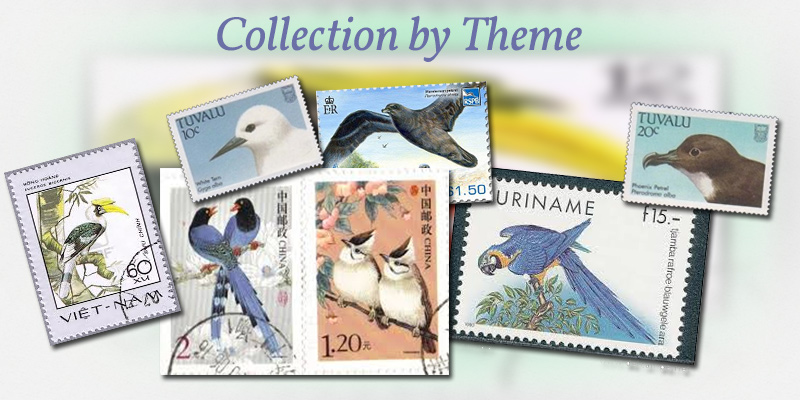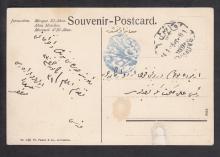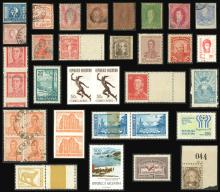Thematic Stamp Collecting - How to get started
Published

Stamp Collections are commonly grouped based on their country of origin, and arranged based on date of issue. But there’s another creative way of collecting and saving the items that you have collected. One thing that you can do is to group these items according to a theme - this is known as a Thematic Collection. The idea behind ‘thematic philately’ is to group the stamps by theme so that the whole catalogue can tell a story. If you want to adopt this style then be ready to pay attention to details, come up with chapters, a title and a good story line that can help viewers appreciate the collection in a different light!
Start Your Thematic Stamp Collection on the Right Note
If you are clueless on where to start and what theme to use, then it’s best to check out some of the industry’s best resources. For example, the British Thematic Association can show you more than 800 themes. Most themes are normally anchored on the author’s interest or profession, for example cars, gardening, Law and even the environment. The idea here is to select a theme that is most familiar so that you have larger room for creativity.
Once a theme has been selected, that’s the time to check out fairs and stamp auction sites. There are a number of sites out there posting schedules of fairs and auctions like Stamp Circuit. The site offers a listing of affiliated auctioneers, a forum and a magazine for those who want to learn more about this hobby.
Don’t just look around; try to ask dealers and enthusiast so you can get expert insights and inputs. If possible, you can also check out their stocks so you will know how you can arrange your collection into chapters. The local Post Office will also serve as a great source of stamps and information when you start your work on your collection.
For example, in England you can look for the latest issues by the Royal Mail, or you can get more information about Britain’s stamp issuances by sending a letter to the Editor, Royal Mail Stamps and Collectibles and request a copy of the ‘British Philatelic Bulletin’ and other related publications. You can also join associations of hobbyists so you can always attend meetings and talk with like-minded enthusiasts. Most groups host their own Exchange packet that will feature stamps offered at cheaper rates.
Be Patient When Starting Your Stamp Collection
Aside from great attention to details, you also need to have lots of patience when researching rare and important stamps. Look for materials that you will need in filing these items like acid-free album pages and stamp hinges. You can also use mounts which can be cut and customized using a cutting mat or knife.
You can also count on other philatelic materials that can complement the stamps in the collection. Look for postmarks and slogans, or markings seen on envelopes. Meter marks will feature advertising pitches and postal stationery that offers illustrations that can surely complement themes. Other materials that can help include maximum cards, stamp booklets and artist drawings and proof.
Here’s How to Finish Off your Stamp Collection
Arrange the stamps and related materials into similar groups that will serve as your ‘chapters’. You should look for a story line right from the onset, and build the collection from there. Add a few sentences but the idea here is to allow the stamps and related materials to tell the story to the viewer. One technique that you can use is ‘windowing’- instead of cutting the unnecessary parts, you can tuck the bulk of the envelope behind the page. But when it comes to postal stationery, it is best to showcase it all.







